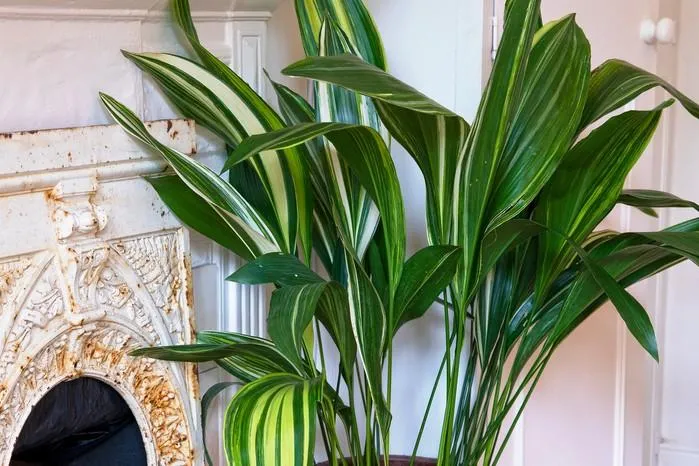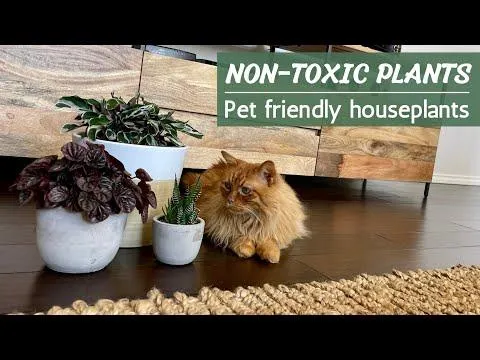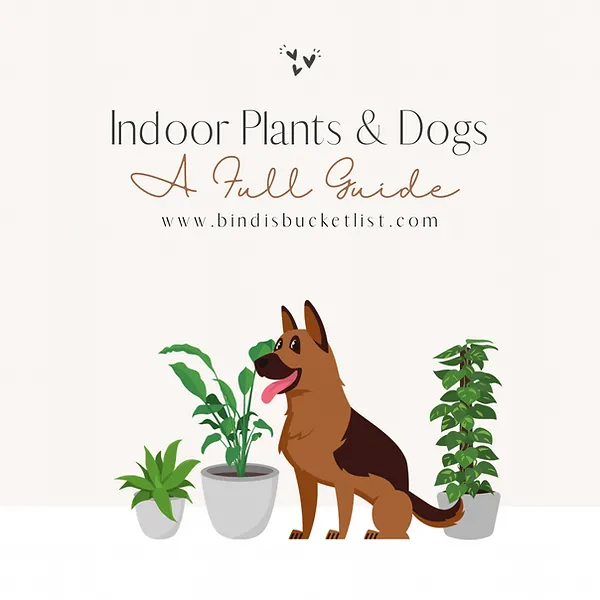Cat and Dog Safe Houseplants: Green Companions for Your Pets
As pet owners, we want the best for our furry friends. But did you know that some common houseplants can be unsafe or even toxic for cats and dogs if ingested? From my experience as an avid plant parent and volunteer at an animal shelter, it’s important to choose plants carefully if you have pets living indoors with you. In this article, I’ll discuss some pet-safe plant options and precautions to keep Fido and Fluffy happy and healthy.
Top Toxic Plant Dangers
Let’s start by covering some of the most well-known toxic plants so you can avoid these. Lilacs, hyacinth, and tulips are common flowers that contain irritating or poisonous substances if pets chew on them. Poinsettias, known for their festive red and green leaves around Christmas, can cause vomiting and diarrhoea in pets. Peace lilies, known for their white blooms and delicate leaves, contain oxalate crystals that are dangerous if ingested. And of course, there’s chocolate – while we love to enjoy it ourselves, chocolate contains methylxanthines that can be dangerous, even life-threatening for pets.
Another sneaky offender is the lily plant family. The pollen and all parts of lilies, including Easter and Stargazer lilies, can seriously damage a cat’s kidneys if they brush up against or nibble the plant. I once fostered a cat who came down with kidney toxicity after being curious around an Easter lily someone gifted me, so I learned this lesson the hard way.
Top 10 Pet-Safe Houseplants
- English Ivy: Hard to kill and virtually non-toxic, English ivy is a great choice for pet owners. Its dense foliage also makes it a good air-purifying plant.
- Snake plant: With thick straplike leaves in shades of green and white, snake plants are tough and tolerate low-light conditions well. They’re also not appealing for pets to chew.
- ZZ plant: Another rugged indoor plant, ZZ plants have thick waxy leaves and are safe for curious pets. They can go several weeks without water too.
- Bamboo palm: With fan-shaped green leaves on tall sturdy stalks, bamboo palms flourish in medium to low light. They’re non-toxic and have a low chance of attracting teeth.
- Chinese evergreen: With decorative broad leaves in a variety of colors, Chinese evergreens are tolerable of low-light and relatively safe for pets.
- Peace lily: While the flowers are toxic, pet owners can opt to trim these blooms to keep peace lilies as non-flowering potted plants. Their large leaves also make them less appealing to nibble on.
- Pothos: Hard to kill and pet-friendly, golden or marble queen pothos trail attractive heart-shaped leaves. They’re great for hanging baskets out of a pet’s reach too.
- Spider plant: With long strappy green leaves and charming baby spiders that form at the tips, spider plants thrive in average home conditions and spread cheerfully.
- Bromeliads: Low maintenance tropical plants like neoregelia braleana and billbergia nutans are cat and dog friendly with intricate foliage in rosettes.
- Rubber plant: Thick glossy dark leaves make rubber plants handsome accent plants. They’re also tough, growing well in low or medium light and tolerating the occasional drying between waterings.
Those are some of my top recommendations from experience keeping indoor plants and pets. But there are other options too – check online plant databases or ask your vet or local nursery for more pet-safe picks.

Plant Placement and Protection
Beyond choosing non-toxic species, it’s also important to consider where and how you display plants if you’ve got roaming pets. Basically, my rule is not to put any plants somewhere a pet can easily access. Put hanging baskets or tall plants up high, for instance on shelves just below the ceiling. Place tabletop and floor plants in sturdy spots pets can’t reach, like the top of a bookshelf or TV stand.
You can also use pots with drainage trays underneath to prevent overturned pots, install plastic sheaths on plants to deter nibbling, or apply pet-safe repellents to discourage chewing. I know busy pets kind of just going their own way sometimes despite our best efforts, but taking precautions like these “sort of” helps minimize plant dangers!
Signs of Plant Poisoning
Nevertheless, as careful pet parents it’s still wise to watch out for signs your furry friend may have gotten into plants. Common symptoms can include vomiting, diarrhea, lethargy, and loss of appetite. More severe symptoms involving organ systems may develop over time with highly toxic ingestions.
If you suspect your pet has eaten a houseplant, it’s best to contact your veterinarian or local animal poison control center promptly. They can advise on assessment and treatment. Have the name of the plant on hand to share, and consider removing the plant from your home as a precaution after an incident.

From personal experience fostering pets over the years, owning a variety of houseplants, and volunteering at animal shelters, hopefully these tips provide a starting point for thoughtfully incorporating greenery into your home with cats and dogs. With the right plant selections and precautions, you can enjoy houseplants and still keep your pets safe! Do reach out if you have any other plant or pet questions.
Parting Thoughts
In closing, while many common houseplants pose dangers, there are still lots of beautiful non-toxic options for pet owners. With some research into toxicity, careful placement away from curious paws and mouths, and monitoring pets for signs of illness, you can have green friends indoors even with furry family members. Living with plants is like totally soothing and reduces stress – both for humans and pets, I bet! Hopefully these notes help reassure and guide you in choosing companionable plant buddies for your home.
Thanks so much for reading! I hope you find a new pet-safe plant pal or two. Let me know if you need any other plant or pet advice in the future. Until then, go out and get growing – safely, of course. Your pets will thank you for keeping it green but not mean.
Cat and Dog Safe Houseplants
| Plant | Toxicity Level | Care Instructions |
|---|---|---|
| Peace Lily | Non-Toxic | Medium indirect light. Keep soil moist. |
| Spider Plant | Non-Toxic | Bright indirect light. Allow soil to partially dry between waterings. |
| Chinese Evergreen | Low Toxicity | Medium light. Keep soil moist but not soaked. |
| Pothos | Non-Toxic | Low light. Let soil dry out between waterings. |
| Snake Plant | Non-Toxic | Bright light. Allow soil to dry between waterings. |
FAQ
-
Are lilies dangerous for cats and dogs?
Certainly, lilies can basically be unsafe for pets. Most parts of the lily plant, including the flowers and leaves, contain toxins that can potentially hurt cats and dogs. Even a little bit can be a problem. So it’s better not to have lilies around if you’ve got furry friends in the house. At the same time, there are some lilies like tiger or Asiatic lilies that seem to be okay. But why take the chance?

-
Which plants should I avoid?
There are quite a bunch of common houseplants that can cause issues for pets. Some of the worst include poinsettia, philodendron, ivy, and Peace lilies. Those lovely white and green spider plants look amazing decorating your home, but don’t be fooled – they’re not pet-friendly either. Ever see parsley or daffodils for sale? Pretty flowers, but the whole plant poses risks to dogs and cats despite what some stores may even say! Stick with safer options mentioned below.
-
What are some pet-friendly plants?
Some plant choices that are typically safer for pets include English ivy, bamboo palm, African violet, pothos, Chinese evergreen, snake plant and, believe it or not, spider plants. Perhaps aloe vera too since it has uses for sunburn. Succulents are usually okay as well since they’re low water. As long as your pal doesn’t chomp the lot, peace lilies and certain orchid varieties might work. Always monitor pets around plants though, right? Who knows what will catch their interest!
-
How can I make sure plants are safe?
Simply searching a plant’s Latin or common name online can provide some guidance, or ask an expert at your local garden store – but don’t just take their word for it. You could also consult websites through the American Society for the Prevention of Cruelty to Animals (ASPCA) or similar groups. They undergo scientific testing to establish plant toxicity levels. But even then, what’s “safe” for most doesn’t mean your particular pet won’t have a strange reaction. So watch for anything like drooling, vomiting, diarrhea or trouble breathing after being around vegetation. Act fast if symptoms arise!
-
What if my pet eats a poisonous plant?
Although it’s best to avoid this situation in the first place, if Fido or Fluffy does nibble on something toxic, don’t panic. First, examine the pet’s mouth to remove any remaining plant material. Then contact your vet right away to get their advice on next steps like inducing vomit or providing treatment. Symptoms will vary depending on the plant, but keep a close eye out for signs of poisoning like lethargy or trouble breathing. In an emergency, go straight to an emergency animal clinic. But with education and monitoring their furry behaviors, hopefully dangerous plant nibbling is unnecessary!

-
Are there any safe human foods for dogs and cats?
While our pets may sometimes beg for bites of people food, their diets should basically consist of balanced commercial pet meals. That’s because some human foods lack proper nutrition or contain ingredients dangerous for dogs and cats. However, in modest amounts, it seems plain boiled boneless chicken or beef might be okay. Small shreds of banana, blueberries or watermelon may also pose little risk. But get advice from your vet first before any people food sharing just to be on the safe side. Their food allergies could surprise you! So unless it’s a special doctor-approved treat, play it safe and stick with commercial pet grub.
So in summary, maybe do your research to avoid potential pet plant problems. At the same time, a few houseplant choices could jazz up your home without risking Fido’s health too. But watch for any signs of trouble just to be on the safe side, right?
